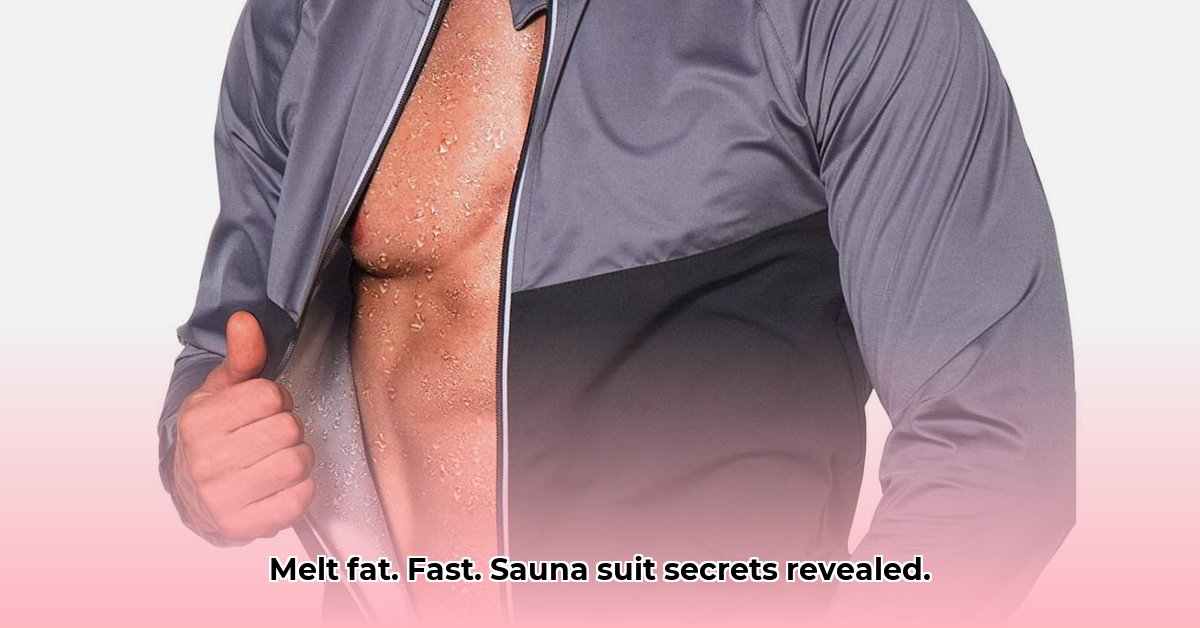
Thinking about using a sauna suit to boost your weight loss efforts? While they won't magically melt away fat, sauna suits can increase sweat production during workouts, leading to a temporary decrease in weight (mostly water). This guide will help you choose the right sauna suit safely and effectively, maximizing the benefits while minimizing risks.
Understanding Sauna Suits: How They Work and What to Expect
Sauna suits work by trapping body heat, increasing perspiration. This increased sweating results in a temporary drop on the scale, primarily due to water loss. Remember, this isn't fat loss; you'll regain the weight once you rehydrate. While not a standalone weight-loss solution, a sauna suit can enhance your workouts and potentially contribute to a calorie deficit when combined with a healthy diet and exercise routine. But what factors should you consider to maximize effectiveness and safety?
Key Features to Consider When Choosing a Sauna Suit
Selecting the right sauna suit is crucial for comfort, effectiveness, and safety. Here's what to look for:
1. Material Matters: Breathability and Durability
The material significantly impacts comfort and longevity. Neoprene (a synthetic rubber) offers superior flexibility and heat retention, but can feel less breathable than nylon blends. Nylon and polyester blends are often more affordable but may be less comfortable and durable in the long run. Think of it like choosing between high-performance athletic wear and everyday clothing. Which best suits your needs and workout intensity?
2. Fit and Sizing: Find Your Perfect Fit
Proper fit is essential for both comfort and safety. A too-tight suit restricts movement and increases the risk of overheating. A too-loose suit won't effectively trap heat. Always consult the manufacturer's size chart and consider ordering a size up if you're unsure. Prioritizing comfort and avoiding overly tight fits should be your main focus.
3. Design and Features: Ventilation and Adjustability
Some suits have features like adjustable cuffs, zippers, and hoods that enhance heat retention and comfort. Ventilation is critical to prevent overheating, so look for suits with mesh panels or strategically placed vents. These details affect how effectively the suit traps heat without compromising safety, so make sure to consider what features are most important to your training and body type.
4. Durability: Built to Last
The quality of stitching and materials contributes significantly to the suit's longevity. Read online reviews to get a sense of how durable different brands and models are. A well-made sauna suit will withstand multiple washes and workouts, reducing the need for frequent replacements.
Sauna Suit Styles: Full Body, Jacket, or Vest?
Sauna suits come in various styles, each influencing heat retention and comfort levels. Full-body suits offer maximum heat trapping, perfect for intense workouts seeking maximum sweat. However, they may be less suitable for warmer climates or less intense training. Jackets and vests offer more targeted warmth and better breathability. Consider which intensity and style best suits your fitness goals and personal preferences.
Sauna Suit Pros & Cons: A Balanced Perspective
Before making a purchase, weigh the potential benefits and drawbacks:
| Pros | Cons |
|---|---|
| Increased sweating (temporary weight loss) | Risk of overheating and dehydration |
| Potential for slightly increased calorie burn | Can be uncomfortable, especially during intense workouts |
| May enhance workout intensity | Not a magic weight-loss solution; diet & exercise are key |
| Motivational boost | Durability can vary; check reviews before purchasing |
Safety First: Guidelines for Responsible Sauna Suit Use
Using a sauna suit safely is paramount. Always:
- Stay Hydrated: Drink plenty of water before, during, and after your workout. Dehydration is a serious risk.
- Ease into It: Gradually increase your sauna suit usage time to allow your body to adapt.
- Listen to Your Body: Stop immediately if you feel dizzy, nauseous, or any other discomfort.
- Ensure Ventilation: Work out in a well-ventilated area, especially indoors.
- Avoid Overexertion: Don't push yourself too hard. Sauna suits intensify workouts, so start slowly.
How to Choose the Best Sauna Suit for You: A Step-by-Step Guide
- Define Your Needs: What's your workout intensity and climate?
- Choose Your Material: Neoprene for flexibility, nylon for affordability.
- Prioritize Ventilation: Look for mesh panels or vents.
- Select the Right Size: Consult the sizing chart carefully.
- Read Reviews: Gauge durability and comfort from user feedback.
- Consider the Price: Balance cost with quality and longevity.
Remember, a sauna suit is a tool to enhance your workout, not a replacement for healthy habits. Combine it with a balanced diet, regular exercise, and proper hydration for optimal results and safety.